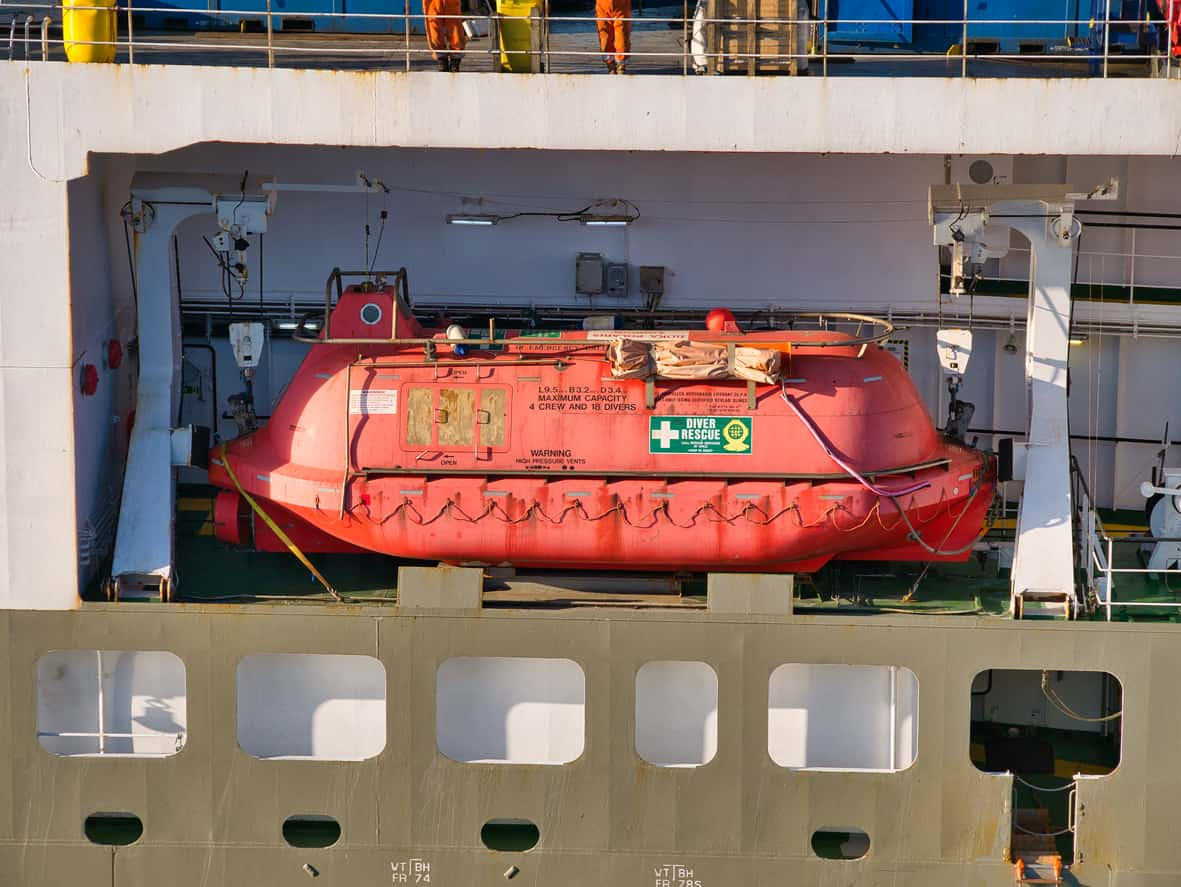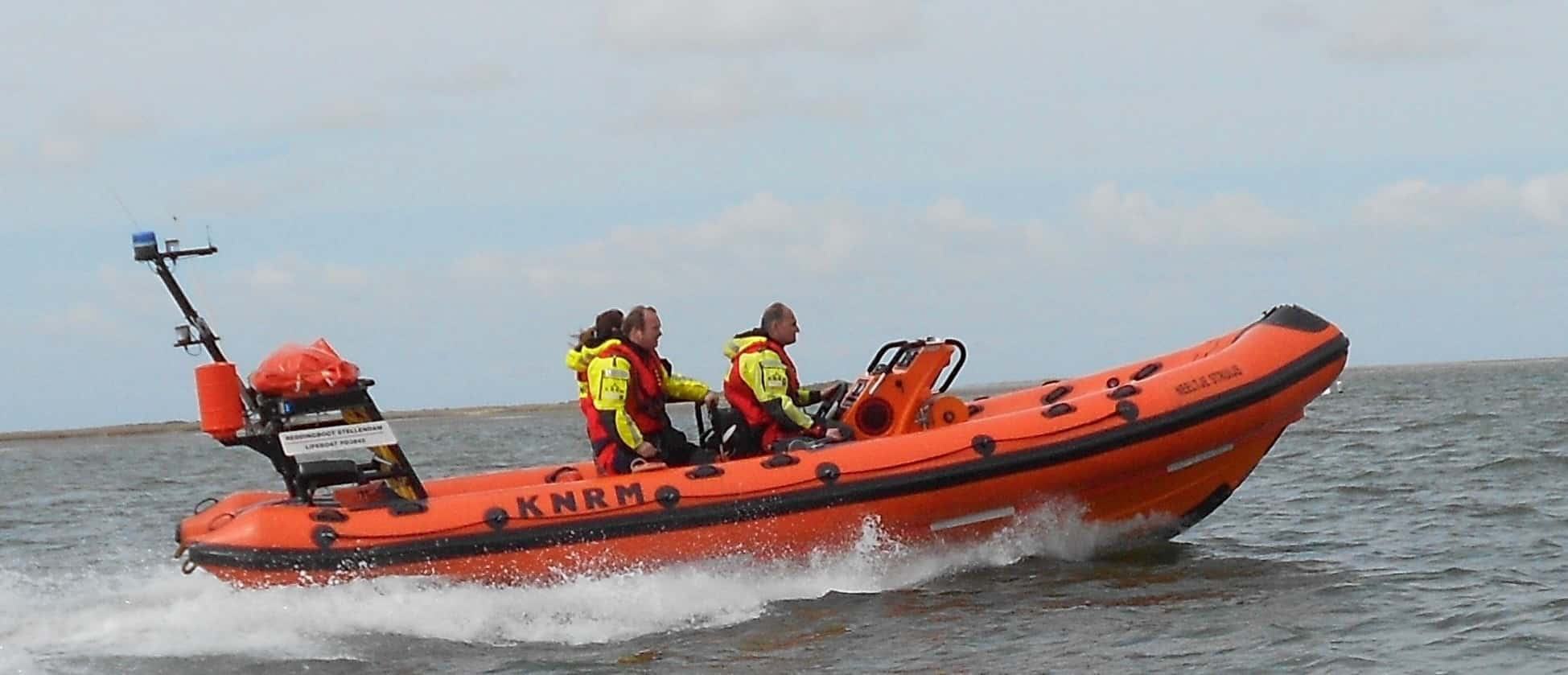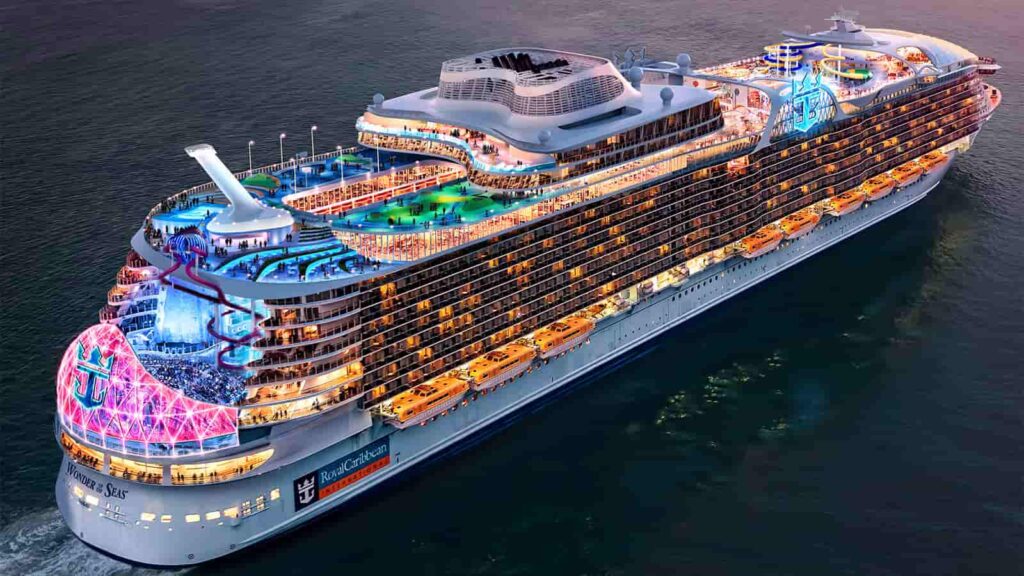Lifeboats on Cruise Ships: The brightly colored lifeboats on the sides are immediately noticeable to anyone who has ever taken a cruise or seen one. And if you’re anything like me, you undoubtedly have a lot of inquiries concerning lifeboats on cruise ships.
I mean, are lifeboats available to accommodate everyone? What is the capacity of the lifeboat? Will the lifeboats on a cruise save your life in an emergency?
You’d be glad to hear that lifeboats for cruise ships have advanced significantly and are now extremely well-designed in the extremely (very!!) unlikely case of an emergency.
If you’re curious about lifeboats or worried about your safety, you might have more questions. How dependable are the tiny boats? Which supplies are transported on board? Are there restrooms available?
To make you feel secure and comfortable when embarking on your next trip, here are the most important things to know about cruise ship lifeboats.
How does a lifeboat look?

The orange or yellow watercraft that line the ship’s sides are known as lifeboats. Many cruise ships have two major types of lifeboats: lifeboat tenders and enclosed lifeboats. Most lifeboats on cruise ships are enclosed, strong vessels with exceptional watertight integrity that can readily right themselves if pushed around by strong waves.
The two primary purposes of lifeboat tenders, which are partially covered, are to transport passengers from the ship to the land in the event of a port call in which the vessel is unable to dock and to act as a lifeboat in an emergency. Cruise ships often have just enough lifeboat tenders to run port tender service, with the remaining lifeboats being the typical enclosed lifeboats, because lifeboat tenders are more expensive to maintain than traditional lifeboats.
There are rows of seats within a lifeboat, some of which may or may not have seatbacks. Toward the top of the boat is a steering section with windows and a hatch. Enclosed lifeboats only have windows in the steering compartment, while lifeboat tenders include windows so they can see outside from their seats, according to lifeboat manufacturer Fassmer. There is no way to open these windows.
Flag of Convenience On Cruise: Why Cruise Ships Follow It
How many lifeboats can a cruise ship typically hold?
Large groups of people can be securely accommodated in lifeboats because to their special design.
The typical lifeboat that is seen on many cruise ships has a capacity of about 150 people. In the case of an emergency, passengers can be swiftly and effectively evacuated thanks to this number.
Larger lifeboats, however, are now required due to the introduction of larger cruise liners. Because of this, lifeboats on some of the bigger, more recent ships can hold up to 370 people. It’s crucial to remember that strict safety rules and regulations are used to define these capacities.
These requirements take into account not only the quantity of seats but also the presence of vital life-saving gear inside the lifeboat, guaranteeing that all occupants have access to supplies and protective gear.
Are inflatable life rafts available on cruise ships?

Cruise ship inflatable life rafts are available for the remaining 25% of passengers who cannot fit in the standard lifeboats. Although visitors can also use rafts if needed, these are usually reserved for staff members, with guests boarding the lifeboats first.
When deployed, collapsible cruise ship life rafts typically use a high-pressure gas to automatically inflate while being kept in fiberglass canisters. Life rafts lack motors, but lifeboats do. But they are equipped with oars. Although they are less frequent on large cruise ships, stiff, non-inflatable life rafts are still available on ships.
A Marine Evacuation System, which transfers passengers from the embarkation deck to an autonomously inflated raft in the water using a fully enclosed inflatable spiral slide, may be utilized in conjunction with life rafts on more recent cruise ships.
Cruise ships include spare life rafts to cover in case any lifeboats are destroyed or cannot be lowered in an emergency. According to SOLAS, there must be an extra 25 percent of the ship’s capacity in life rafts. Additionally, lifeboats and life rafts on cruise ships are intended to deploy even in the event of a 20-degree list.
On cruise ships, where are lifeboats located?
Lifeboats are situated outdoors on both sides of the cruise ship, usually kept on or slightly above a middle deck, with an accessible outdoor promenade for people to board. This position is perfect because it’s close to a lot of public indoor and outdoor activities and services, as well as the upper- and lower-deck cabins.
Additionally, it functions well since it raises the lifeboats high enough above the sea so that they won’t obstruct the ship’s docking path or be impacted by choppy waves. However, as no one wants to see a lifeboat from their upper-deck suite or the lido pool, it keeps them low enough so they don’t have to be lowered the whole height of the ship.
Passengers should not go straight to the lifeboats in an emergency. Instead, each cabin is given an assembly station where, if an evacuation is judged necessary, they will meet up with crew members and be directed to a lifeboat. To locate their assembly station and get familiar with the ship’s emergency protocols, passengers are required to participate in a muster drill. Before a cruise ship may depart, these exercises have to be completed.
What kind of items are in a lifeboat?
The majority of the items on a cruise ship lifeboat are listed below, however it’s not all-inclusive, per the LSA:
- Enough fuel to travel at 6 knots for at least a full day (24 hours)
- 48 hours’ worth of anti-seasickness medication per person
- 2 seasickness bags per person
- 3 liters of fresh water per person
- 2,390 calories’ worth of food rations per person
- Life jackets
- Enough thermal protective aid suits for 10% of the lifeboat’s capacity
- Three can openers
- First aid supplies
- Buoyant oars
- Anchor
- Illuminated compass
- Hand and parachute flares
- Smoke signals
- Survival manual
- One whistle
- One jackknife
- One searchlight that can work continuously for at least three hours
- Portable fire extinguishing equipment
- Fishing gear
- Tools to repair the engine
Nickelodeon Cruise: What Happened to the Family-Friendly Cruise?
Exist restrooms aboard lifeboats?
The 370-person catamaran lifeboats that are utilized on Royal Caribbean’s Oasis-class ships are equipped with restrooms, while traditional 150-person lifeboats do not.
What additional specifications apply to lifeboats on cruise ships?

According to SOLAS, lifeboats on cruise ships have to be constructed from noncombustible and flame-retardant materials. Fiberglass is typically used to make lifeboats nowadays. Every seat in the lifeboat must be able to support a person weighing at least 220 pounds. Furthermore, the lifeboats and the cables that raise and lower them need to be strong enough to enable the lifeboat to be lowered to its maximum depth.
How do lifeboats undergo testing?
Water weights are used in lifeboat testing during the production process to simulate the weight of passengers at different locations throughout the vessel. These water weights have remote pumps that fill and empty them with water. During the testing phase, they are positioned throughout the lifeboat to collect data on how the craft would manage passenger weight in various settings and circumstances.
The testing and inspections continue even after a lifeboat is delivered to the shipyard for installation on a vessel. Like any equipment, lifeboats may experience wear and tear and degradation over time due to weather, time, and use during the cruise ship’s lifetime. For this reason, SOLAS stipulates that lifeboat training and inspections must occur regularly.
To keep their knowledge of lifeboat operations up to date, members of the cruise crew participate in frequent training as well as weekly and monthly lifeboat inspections.
Every year, a more comprehensive check is conducted, either by an inspector from the lifeboat maker or by a qualified lifeboat technician from a different business. The International Maritime Organization states that an inspection of five crucial elements is a part of this process:
- The hull is inspected for cracks, damage or other defects.
- The propulsion system, including the engine, is inspected to ensure it’s in good working condition. The cooling, exhaust and fuel systems are also examined.
- The electrical system, including the battery, charging, lighting and communications systems, are checked for defects or malfunctions.
- The maneuvering system is inspected, including the steering mechanism, the rudder and other steering gear.
- Lifeboat equipment, such as life jackets and survival equipment, is examined to ensure it’s in good condition.
- The davit and winch system, including the winch and wire ropes, are checked for defects or damage.
- The lifeboat undergoes a load test to ensure that it can withstand its maximum weight of crew and passengers.
During the inspection, any systems or equipment that are discovered to have flaws or shortcomings are either replaced or rectified.
In summary
It is highly unlikely that any cruiser will ever experience a situation that necessitates lifeboat evacuation. Nevertheless, knowing that your ship is equipped with safety features will ease your worry when you embark on your next trip.


